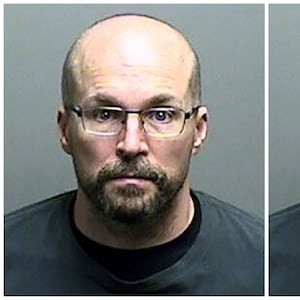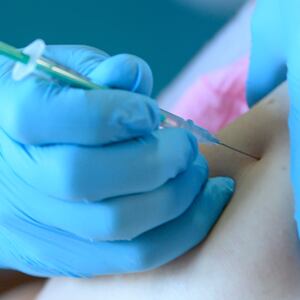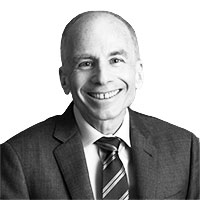The United States leads the world in coronavirus cases and deaths, and it’s not even close. But the U.S. also has led the world in COVID-19 vaccine development, with the Food and Drug Administration (FDA) authorizing two highly effective vaccines within a year of the Wuhan outbreak. And even though the vaccine rollout has been hugely disappointing, the U.S. is still, somehow, among the world’s leaders in getting shots into people’s arms.
The country is well on track to gain herd immunity this year, even as tales of long lines, supply-chain problems, line-skipping, and broken eligibility rules are inescapable.
Still, the causes of the initial delays, and the reasons why, even with a botched rollout, the United States is vaccinating its population faster than most countries are disturbing. They raise the urgent question of how the process can be sped up, especially for the most vulnerable—and, just as important, how to bring the rest of the planet along, too.
America’s world-leading death toll is a tragic testimony to a dismal COVID-19 response. Yet U.S. scientific prowess has shined through—as has funding, more than $12 billion through the Trump administration’s Operation Warp Speed. The National Institutes of Health supported innovative vaccine technologies, like the mRNA platform that both the Moderna and Pfizer/BioNTech vaccines currently being rolled out are based on.
All this propelled development at unprecedented speeds. Vaccine research on two novel coronaviruses (SARS and MERS) was already well advanced. Clinical trial innovations—combining phase 1/2 and 2/3 trials and “rolling reviews,” where researchers shared data with regulators in real-time—sped the vaccines toward approval.
Then came the delays. The Trump administration distributed only 14 million doses to states, holding others in reserve for second doses—a reserve that was depleted before the Biden administration took office. Meanwhile, Pfizer experienced worldwide shipping delays. And the Trump administration passed on the chance to secure more Pfizer vaccines. By the end of 2020, just over 3 million doses had been distributed.
Inadequate supply undoubtedly stalled the rollout. Yet even scarce doses are not getting into people’s arms as quickly as they should be. Remarkably, states were left to figure it out without any national plan. While December’s COVID-19 relief package included $8 billion to support vaccine distribution, the funding is coming late, and lack of federal aid to states has depleted health department resources. With little notice before shipments arrive, governors could only do so much planning.
There’s also the problem of vaccine hesitancy. Many health workers and nursing-home staff have declined being vaccinated. And with vaccination campaigns underway in the midst of COVID-19’s third and worst wave, the health system is already stretched to its limits.
Even well-intentioned actions have thrown a wrench in the process. CDC recommendations on equitable vaccine distribution (a tiered system including health-care workers, long-term care facilities, the elderly, and essential workers) are proving overly complicated. On top of this, we should not lose sight of the unprecedented challenge of vaccinating most of the adult population within months. While New York City successfully vaccinated more than 6 million people against smallpox in less than a month in 1947, we have never launched a nationwide mass vaccination campaign for a novel disease.
Most glaringly, the rollout has not been equitable. At times, this is built into the rules: broad definitions of health and other essential workers have given priority to those who aren’t at heightened risk, like remote psychologists. Many people of means have jumped the line. Word-of-mouth, connections, and tech-savviness are getting them vaccines sooner than the vulnerable. Top Hollywood executives have used their network of private doctors and concierge services unavailable to the vast majority of Californians to receive the vaccine.
Understandable mistrust of the health system, particularly among the Black population, leads to more vaccine hesitancy. And vaccine distribution sites are harder for people in disadvantaged or rural communities to access. Data from 16 states indicates that Black people are being vaccinated at far lower rates. In many states, whites have been vaccinated at two to three times the rate as Black people.
Still, despite all of this, the U.S. is roughly sixth in the world in inoculating its population in terms of rate of vaccination, on track to vaccinate most residents within six months. Israel is leading the way, thanks, as the New York Times reported, to “aggressive procurement” and a “heavily digitized, community-based health system.”
The United Arab Emirates, the second-fastest, is using the Chinese-made Sinopharm vaccine, which appears to be at least somewhat effective but has yet to be subject to the same level of clinical-trial scrutiny as its rivals.
So the U.S. is looking good, using the most effective vaccines while sticking with the science. So far, more than 25 million Americans, over 7 percent of the population, have received at least one dose. The country is likely to move even higher in the world rankings as its vaccine supplies expand.
In part, the U.S. is doing this well because of its baked-in advantages. Above all is wealth. America has bought its way to the front of the line, spending billions of dollars on purchase agreements with half-a-dozen vaccine manufacturers. Both FDA-authorized vaccine manufacturers are U.S.-based companies. Low-income countries rely entirely or largely on COVAX, the global system for vaccine distribution—which is expected to cover, at best, 20 percent of countries’ populations by year’s end. Wealthy countries have bought up most of the world’s supply, leaving little for others. The U.S. also has a well-developed public health infrastructure, including the ability to keep vaccines in ultra-cold storage.
Meanwhile, many other wealthy nations have faced their own struggles. European countries are experiencing shortages in vaccine supplies. Delays of the Pfizer vaccine while it refurbishes its Belgium facility have plagued the European Union, while too few nurses available to distribute the vaccine have made things even worse. A deep rift has formed between the E.U. and U.K., with politicians competing for scarce supplies.
President Biden plans to speed up vaccinations beyond his initial target of 100 million doses in his first 100 days. The U.S. is already on a faster clip, averaging 1.3 million per day. He is now aiming towards 150 million doses in 100 days. The administration has secured the rights to an additional 200 million doses, bringing the total to 600 million, enough for 300 million Americans. That could mean all adults vaccinated by the end of this summer, meeting or exceeding the number needed for herd immunity—assuming people take them.
What’s more, a third vaccine should soon become available after the release of promising results for Johnson & Johnson’s jab—which requires only a single dose and only ordinary refrigerators for storage. The company is expected to apply to the FDA for emergency authorization this week. Initial results from the Novavax vaccine are also encouraging, with more data expected soon.
The Biden administration is giving states advance notice of the upcoming supply, allowing better planning. The administration’s $1.9 trillion COVID-19 proposal includes $20 billion for vaccines, including to greatly increase the number of vaccine distribution sites and hire 100,000 more health workers, while reimbursing states from disaster relief funds. A large-scale, targeted vaccine information campaign is planned, with particular focus on people of color, working to build trust.
The president also plans to use the National Defense Production Act to expedite vaccine production. Though with Pfizer and Moderna operating at maximum capacity, and the complexity of making mRNA vaccines, it’s unclear if it will make a difference.
We are in a race for time. Surging coronavirus variants could become resistant to existing vaccines. And the longer SARS-CoV-2 circulates, the more mutations will occur, with vaccine trials already finding lower efficacy against the South African variant. Speeding vaccination will require all of us—not only government—to do a far better job at mask-wearing and social distancing.
It is critical that our pathway be an equitable one. The administration’s communication strategy is one key step, while expanded access including community centers is another. President Biden issued an executive order to establish a COVID-19 Health Equity Task Force and ordered agencies to ensure an equitable response.
For all of its difficulties, the U.S. is well positioned to be among the first countries to reach herd immunity. Yet with this privileged position also comes responsibility to people wherever they live, from funding to sharing vaccine supply. This is not only the just thing, but will also best protect Americans’ health, security, and prosperity. By reducing COVID-19 infections and the virus’s opportunity to mutate, the U.S. can defend against new variants that may evade the vaccines Americans rely on as their pathway to normality.
We must combine speed and equity at home with a sense of urgency in fighting COVID-19 globally. We cannot recover the lives lost or undo past injustices, but we can create a legacy of this pandemic that is worthy of the United States.




